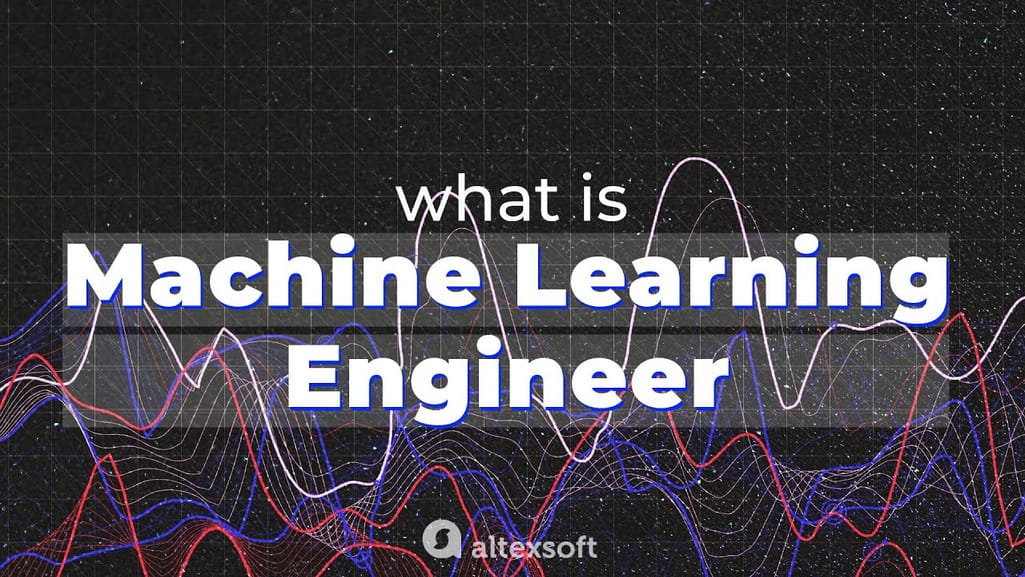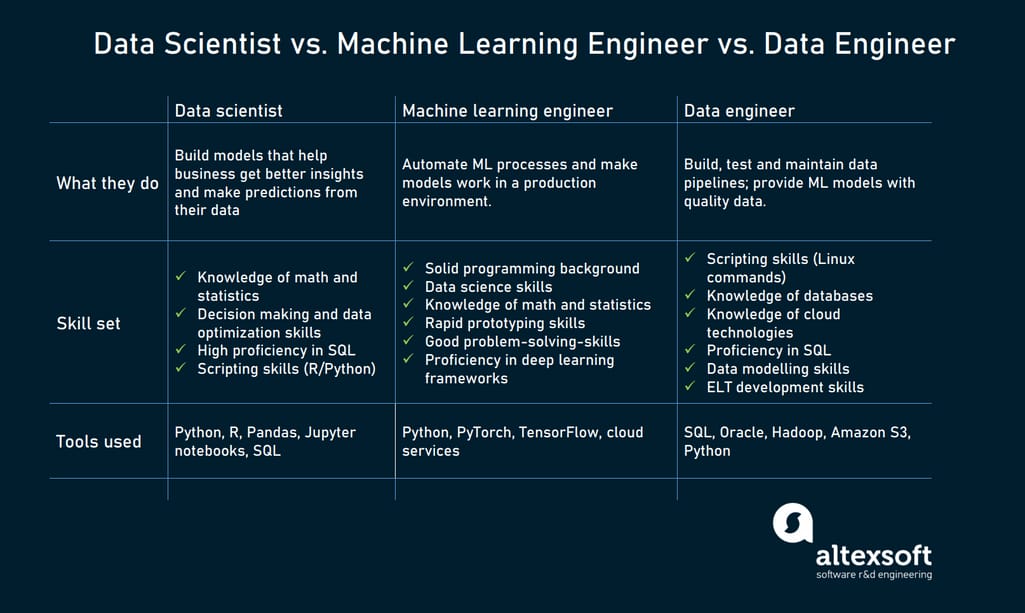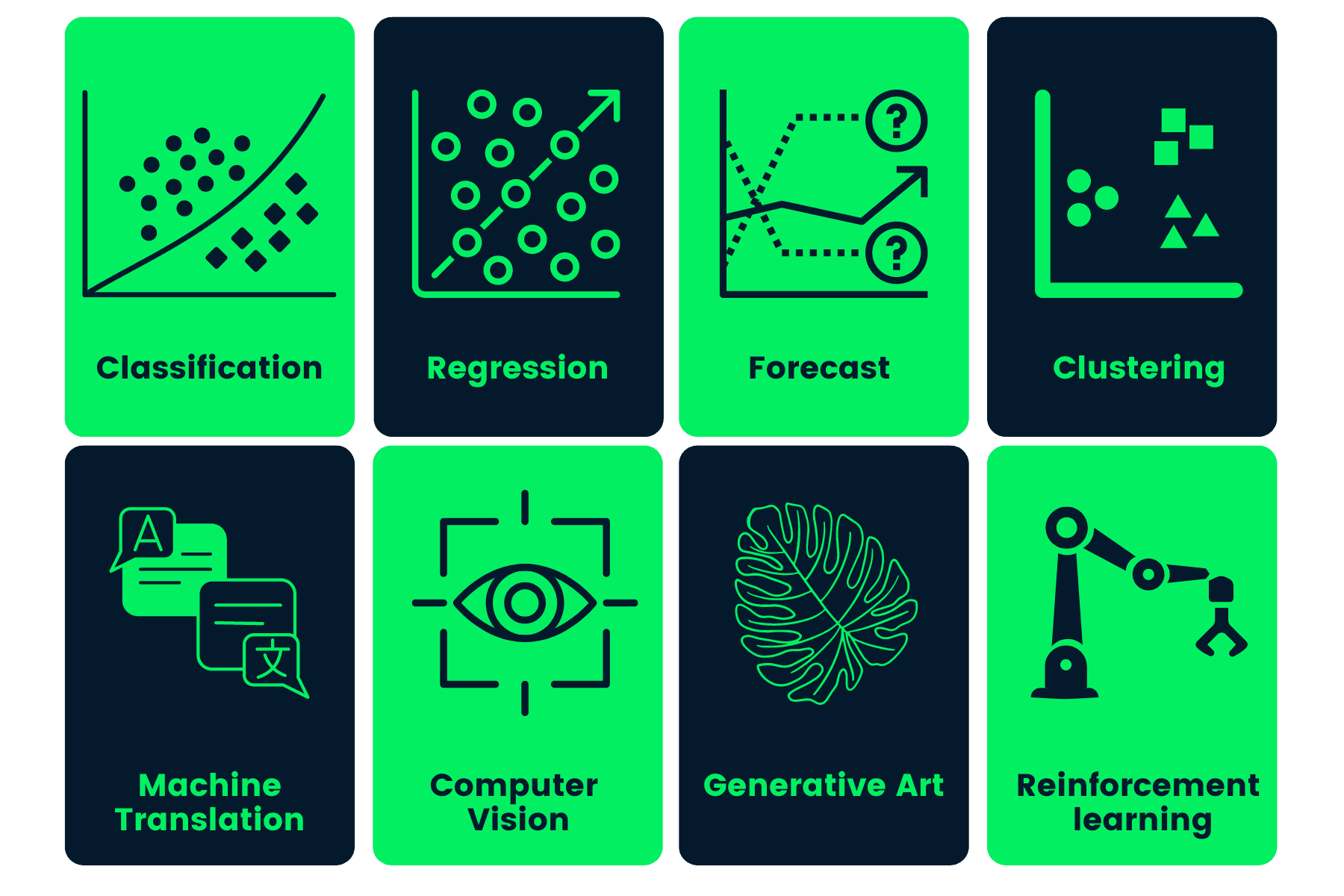All Categories
Featured
Table of Contents
- – The 6-Minute Rule for Top 20 Machine Learning ...
- – Some Known Incorrect Statements About Software...
- – Indicators on Pursuing A Passion For Machine ...
- – 4 Easy Facts About Machine Learning In A Nuts...
- – The 9-Minute Rule for Machine Learning Engin...
- – All About Machine Learning Engineer
- – Not known Details About Why I Took A Machine...
Some people believe that that's dishonesty. If somebody else did it, I'm going to use what that individual did. I'm requiring myself to believe with the possible services.
Dig a little bit deeper in the math at the start, simply so I can construct that foundation. Santiago: Lastly, lesson number 7. I do not think that you have to recognize the nuts and screws of every formula before you utilize it.
I would have to go and inspect back to in fact obtain a much better intuition. That doesn't imply that I can not fix things utilizing neural networks? It goes back to our sorting example I assume that's just bullshit guidance.
As a designer, I have actually worked with numerous, many systems and I've utilized lots of, many things that I do not understand the nuts and bolts of exactly how it works, despite the fact that I comprehend the influence that they have. That's the final lesson on that particular string. Alexey: The amusing thing is when I think of all these libraries like Scikit-Learn the formulas they utilize inside to execute, as an example, logistic regression or another thing, are not the very same as the formulas we examine in artificial intelligence classes.
The 6-Minute Rule for Top 20 Machine Learning Bootcamps [+ Selection Guide]
Also if we attempted to discover to get all these basics of machine knowing, at the end, the algorithms that these collections utilize are different. Santiago: Yeah, definitely. I assume we require a great deal more pragmatism in the industry.

Incidentally, there are two different paths. I generally talk to those that wish to work in the industry that wish to have their impact there. There is a course for scientists and that is totally various. I do not dare to mention that because I don't recognize.
Right there outside, in the industry, pragmatism goes a lengthy way for sure. Santiago: There you go, yeah. Alexey: It is a great inspirational speech.
Some Known Incorrect Statements About Software Engineering Vs Machine Learning (Updated For ...
One of the points I desired to ask you. First, allow's cover a couple of points. Alexey: Allow's start with core devices and structures that you require to discover to in fact transition.
I recognize Java. I know exactly how to make use of Git. Maybe I understand Docker.
What are the core tools and structures that I require to discover to do this? (33:10) Santiago: Yeah, absolutely. Terrific question. I believe, number one, you must start discovering a little of Python. Given that you already recognize Java, I don't think it's going to be a huge transition for you.
Not due to the fact that Python is the very same as Java, but in a week, you're gon na get a great deal of the distinctions there. Santiago: Then you obtain certain core devices that are going to be utilized throughout your whole occupation.
Indicators on Pursuing A Passion For Machine Learning You Should Know
You obtain SciKit Learn for the collection of machine discovering formulas. Those are devices that you're going to have to be making use of. I do not advise simply going and finding out about them out of the blue.
Take one of those programs that are going to begin introducing you to some problems and to some core concepts of device knowing. I do not keep in mind the name, but if you go to Kaggle, they have tutorials there for complimentary.
What's good concerning it is that the only demand for you is to know Python. They're mosting likely to offer a trouble and tell you exactly how to make use of choice trees to address that specific problem. I think that process is very powerful, since you go from no machine learning background, to recognizing what the problem is and why you can not resolve it with what you understand right now, which is straight software engineering practices.
4 Easy Facts About Machine Learning In A Nutshell For Software Engineers Shown
On the various other hand, ML designers specialize in structure and deploying artificial intelligence versions. They focus on training versions with data to make forecasts or automate tasks. While there is overlap, AI engineers handle even more diverse AI applications, while ML engineers have a narrower concentrate on maker knowing algorithms and their practical application.

Device learning designers focus on creating and releasing machine discovering models into manufacturing systems. On the various other hand, data scientists have a wider role that consists of data collection, cleansing, exploration, and structure models.
As organizations significantly embrace AI and equipment discovering innovations, the demand for competent specialists grows. Artificial intelligence engineers function on cutting-edge tasks, add to development, and have affordable wages. Success in this area requires constant understanding and maintaining up with evolving modern technologies and methods. Artificial intelligence roles are typically well-paid, with the possibility for high gaining capacity.
ML is basically various from typical software advancement as it focuses on teaching computer systems to pick up from data, as opposed to programs specific policies that are implemented systematically. Unpredictability of outcomes: You are probably used to writing code with foreseeable results, whether your feature runs as soon as or a thousand times. In ML, nevertheless, the results are less specific.

Pre-training and fine-tuning: Just how these models are educated on huge datasets and afterwards fine-tuned for particular tasks. Applications of LLMs: Such as message generation, sentiment evaluation and information search and retrieval. Documents like "Attention is All You Need" by Vaswani et al., which introduced transformers. Online tutorials and training courses concentrating on NLP and transformers, such as the Hugging Face training course on transformers.
The 9-Minute Rule for Machine Learning Engineer Course
The capability to handle codebases, combine adjustments, and solve disputes is simply as crucial in ML development as it is in traditional software jobs. The skills established in debugging and screening software application applications are very transferable. While the context may transform from debugging application reasoning to recognizing concerns in data processing or design training the underlying concepts of systematic investigation, theory testing, and iterative refinement coincide.
Maker knowing, at its core, is greatly reliant on statistics and probability concept. These are critical for recognizing exactly how algorithms learn from data, make predictions, and evaluate their performance.
For those curious about LLMs, a detailed understanding of deep understanding designs is valuable. This includes not just the mechanics of semantic networks however also the design of specific designs for different use situations, like CNNs (Convolutional Neural Networks) for image processing and RNNs (Recurrent Neural Networks) and transformers for consecutive information and natural language processing.
You ought to recognize these issues and learn techniques for determining, alleviating, and connecting regarding predisposition in ML models. This consists of the prospective influence of automated choices and the moral implications. Numerous versions, especially LLMs, need substantial computational resources that are often provided by cloud platforms like AWS, Google Cloud, and Azure.
Structure these skills will certainly not only assist in an effective transition right into ML however likewise make certain that programmers can contribute successfully and properly to the improvement of this dynamic area. Theory is essential, yet absolutely nothing beats hands-on experience. Start dealing with projects that allow you to apply what you've found out in a functional context.
Construct your jobs: Begin with straightforward applications, such as a chatbot or a message summarization tool, and progressively raise complexity. The area of ML and LLMs is quickly advancing, with new breakthroughs and modern technologies arising frequently.
All About Machine Learning Engineer
Sign up with areas and forums, such as Reddit's r/MachineLearning or area Slack networks, to review concepts and obtain guidance. Go to workshops, meetups, and meetings to link with other specialists in the field. Add to open-source jobs or create blog site articles about your understanding journey and projects. As you obtain competence, begin searching for possibilities to integrate ML and LLMs right into your job, or look for new duties concentrated on these modern technologies.

Vectors, matrices, and their duty in ML formulas. Terms like model, dataset, features, labels, training, reasoning, and recognition. Information collection, preprocessing methods, version training, analysis procedures, and release factors to consider.
Choice Trees and Random Forests: Instinctive and interpretable versions. Matching trouble types with appropriate models. Feedforward Networks, Convolutional Neural Networks (CNNs), Frequent Neural Networks (RNNs).
Continuous Integration/Continuous Release (CI/CD) for ML workflows. Design monitoring, versioning, and performance monitoring. Identifying and addressing modifications in model efficiency over time.
Not known Details About Why I Took A Machine Learning Course As A Software Engineer

Course OverviewMachine discovering is the future for the future generation of software application experts. This training course offers as an overview to device learning for software program designers. You'll be presented to 3 of the most pertinent parts of the AI/ML discipline; monitored knowing, neural networks, and deep learning. You'll realize the differences in between conventional programming and machine learning by hands-on growth in monitored discovering before developing out intricate distributed applications with semantic networks.
This course functions as a guide to equipment lear ... Show Much more.
Table of Contents
- – The 6-Minute Rule for Top 20 Machine Learning ...
- – Some Known Incorrect Statements About Software...
- – Indicators on Pursuing A Passion For Machine ...
- – 4 Easy Facts About Machine Learning In A Nuts...
- – The 9-Minute Rule for Machine Learning Engin...
- – All About Machine Learning Engineer
- – Not known Details About Why I Took A Machine...
Latest Posts
How To Negotiate Your Software Engineer Salary Like A Pro
The Best Python Courses For Data Science & Ai Interviews
10+ Tips For Preparing For A Remote Software Developer Interview
More
Latest Posts
How To Negotiate Your Software Engineer Salary Like A Pro
The Best Python Courses For Data Science & Ai Interviews
10+ Tips For Preparing For A Remote Software Developer Interview